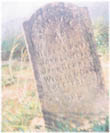Gamini Punchihewa traces the path of ancient Ceylon's
most famous British captive Robert Knox
On a historic quest
Robert Knox, Snr. and his son Robert Knox, Jnr. with
their merry band of sailors boarded the ship 'Anne' in London on January
21, 1658. They were to sail on trade missions to East Indies under the
British East India Company.
After a voyage of about one year and nine months, they encountered stormy
weather along the Coromandel Coast and Bay of Bengal. The ship's mast and
sails were damaged and they landed near Kottiar Bay (estuary of Mahaweli
Ganga, Trincomalee) on November 19, 1659.
Whiteman's tree
When King Rajasinghe II of Kandy (1629-1687 A.D.) heard of their arrival
he sent them gifts and invited them to come ashore. They were received
by the Disawe of the district. But later, while Robert Knox Snr, was resting
under a tamarind tree the king's men took him captive.
In later years, this tree where Robert Knox Snr. was captured was duly
marked with a memorial tablet. On it was carved the words: "This is the
Whiteman's tree under which Robert Knox, captain of the ship 'Anne' was
captured". The stone tablet was placed in 1893 and was maintained for a
number of years by the Government Archivist. When the tree showed signs
of decay, he had it sprayed with insecticide and even propped up with brick
columns. But the cyclone that lashed Trincomalee in the 1970s brought the
tree down. The stone tablet that stood near the foot of the tree was taken
to the Colombo National Museum to be preserved for posterity.
Their life and times
Most of Knox's sailors once ashore were actively engaged in knitting garments
or engaging in animal husbandry, poultry and even growing paddy. There
were others engaged in distilling arrack. Robert Knox Jnr. became a money
lender like the Afghans of old in Ceylon. He gave not money, but paddy
with 50% interest charged on it.
Some sailors became the blue-eyed boys of the king and were mobilized
into His Majesty's armed forces. Among them was Richard Varhan who was
appointed commander of the king's 970 soldiers' regiment. A few intermarried
and settled down there.
Separation and death
Then came the sad separation of the whole crew on the orders of King Rajasinghe.
Robert Knox Snr. and his son were kept for some time in a village called
'Bonder-Coos-Watte (as recorded in Robert Knox's book, 'A Historical Relation
of Ceylon' (1681). This village refers to the modern Bandara Coswatta close
to Wariyapola in the North Central Province.
Robert Knox, Snr. was afflicted with malaria and died in February 1666
at Bandara Koswatte.
Knox Jnr. and his companions were allowed to stay in villages chosen
by the king and allowed to roam around the area. After his father's tragic
death, Knox shifted to a place called Handpanadara (modern Deyaladha Amuna
Pattuwa), south east of Kegalle (present village Etiriyagala). There he
stayed for two years from 1664-1666 earning his living - by knitting caps
and other garments.
Next to Legundeniya
From Bandara Coswatte, like a wanderer of no fixed abode, Robert Knox,
on the orders of the king shifted to Legundeniya in the Kandy District
about 6-7 miles from Gampola accompanied by his comrades John Loveland,
John Marry, and William Bay. They lived there for three years from 1667-70
A.D.
In his book 'A Historical Relation of Ceylon' Robert Knox gives his
impressions of Legundeniya. "We all four were brought up together into
a town on the top of a mountain called Legundeniya, where I and my fellow
Bachelor, John Loveland lived together in one house. For by this time,
not many people as we, that single man, but seeing so little hopes, despaired
of their liberty, and had taken wives or bedfellows. At our first coming
into the town, we were very much dismayed, it being one of the most dismal
places, I have set upon that Land. It stand alone upon on the top of a
mountain and no other town near it and about four to five houses in it".
 The
historic stone table The
historic stone table
I first visited Legundeniya in late 1980 while on a holiday in Gampola
and re-visited it recently in early October. I was keen to visit these
places where Robert Knox and his companions lived. I was hosted by two
of my old comrades of the Gal Oya Development Board and River Valleys Development
Board in Gal Oya and Walawe and later in the Mahaweli Authority, Thilak
Palliyaguruge and Upali Perera.
On October 1 in the hazy morning mist, Upali drove in his car to Kundasale
to pick us up.
We took the Kandy-Gampola-Nuwara Eliya highway, and turned off at Vepitiya
junction and from there took the road to Pupuressa via Panvilatenna.
All around the hills were dotted with tea and rubber, the valleys and
dales filled with cocoa plantations and gam-miris vel (pepper vines) interlaced
with terraced rice fields.
From Panvilatenna through the bazaar, we were directed to Robert Knox's
stone memorial by the villagers who told us in their own words - "Knoxge
kulunne". They pointed out to a decrepit narrow metalled road that led
the way to Legundeniya.
On a hillock close to a Bo tree (where there is power installation),
stood this small stone memorial. On it was carved the following words,
still discernible to the naked eye, "Here lived A.D. 1667-70, Robert Knox,
John Loveland, John Barry, and William Bay". Erected 1908, JPL
Writing of Legundeniya, Knox says, 'one of the most dismal places....
into a town on the top of a mountain'.
In my last visit in 1980, I met an old villager, Kallora Mudiyanselage
Appuhamy who had subsequently passed away.
Apparently one of his ancestors had lived with Knox as his caretaker
providing him and his companions with foodstuffs.
He too bore that same name of Kallora Mudiyanselage Mudalihamy.
(Next - Eladetta: Robert Knox's final abode and his escape.) |